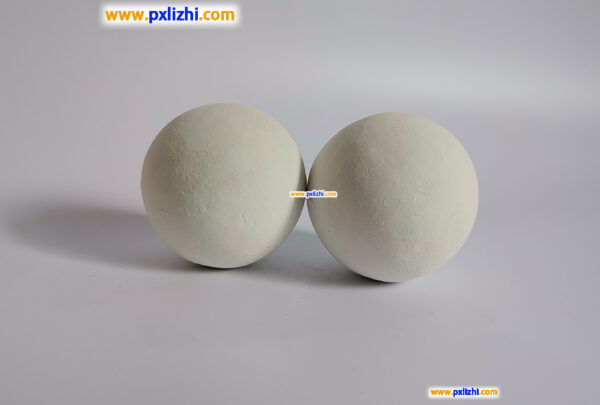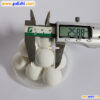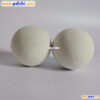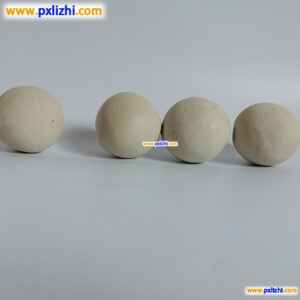Definition
High alumina balls are a category of alumina balls. They are named for their high alumina content. Based on the alumina content, they can be further classified into series such as 90, 92, 95, and 99.

Main Components
The main raw materials are bauxite and alumina. Other alloy raw materials may also be added. The main component is aluminium, and it contains elements such as manganese, magnesium, and chromium.
Performance Characteristics
High strength and high hardness: The high-aluminum balls have high strength and hardness. In operations such as grinding and crushing, they can withstand large pressure and impact forces without deforming or being damaged, effectively improving work efficiency.
High wear resistance: Their wear resistance is excellent. Compared with ordinary grinding balls or natural pebbles, the wear speed of high-aluminum balls is slower, and their service life is longer, which can reduce the maintenance and replacement costs of equipment.
Good high-temperature resistance: They can maintain stable performance in high-temperature environments and will not soften, deform or crack due to high temperatures, making them suitable for high-temperature industrial production processes.
Strong corrosion resistance: They have good corrosion resistance and can exist stably in corrosive media such as acids and alkalis, being less prone to corrosion and suitable for industries with strong corrosiveness such as chemical and metallurgical industries.
High specific gravity and small volume: The high-aluminum balls have a high specific gravity, with greater mass for the same volume. In the grinding process, they can generate greater impact force, which is beneficial for improving grinding efficiency; at the same time, they have a small volume and can be filled into the narrow spaces of equipment to increase the utilization rate of the equipment.

Application fields
Grinding industry: It is used for grinding ceramic raw materials, which can shorten the grinding time, improve production efficiency, reduce energy consumption, and enhance the quality and precision of ceramic products, making them finer and more uniform.
Chemical industry: As a base filler material in various hydrogenation cracking units, refining units, catalytic reforming units, etc. in chemical plants, it can increase gas or liquid distribution points, support and protect weakly strong active catalysts.
Catalyst Carrier: In catalytic reactions in petrochemical industry, high-aluminum balls are often used as catalyst carriers. Many petrochemical reactions, such as catalytic cracking and hydrogenation refining, require that the catalysts be uniformly dispersed and fixed on a certain carrier to enhance the activity and selectivity of the catalysts. High-aluminum balls have a large specific surface area, which can provide sufficient attachment surfaces for the catalysts, enabling the catalysts to function better. At the same time, they have good chemical stability and will not undergo chemical reactions with the catalysts and reaction raw materials, thus ensuring the smooth progress of catalytic reactions. For example, in catalytic cracking, loading the catalyst on high-aluminum balls can promote the cracking of heavy oil molecules under the action of the catalyst into light oil molecules, thereby increasing the yield of light oil products such as gasoline and diesel.
Support and protection in the reactor: In various petrochemical reactors, high-aluminum balls can be used as supporting agents. They are placed at the bottom of the reactor and are used to support the catalyst and other solid materials on the upper layer, enabling the reaction materials to pass through the catalyst bed layer uniformly and ensuring the stability and uniformity of the reaction. In addition, high-aluminum balls can also play a buffering and protective role for the catalyst, preventing the catalyst from directly being impacted and worn by the reaction materials, and prolonging the service life of the catalyst. For example, in fixed-bed reactors, high-aluminum balls can evenly distribute gaseous or liquid reactants, avoiding local overheating or uneven reactions.










Reviews
There are no reviews yet.